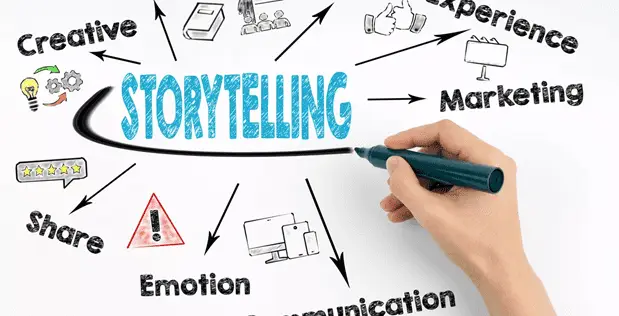Crafting Memorable Campaigns and Building Brand Loyalty
In the ever-evolving world of marketing, one timeless strategy remains a powerful force: storytelling. As humans, we’ve been telling stories for centuries to communicate, entertain, and educate. When it comes to marketing, compelling stories can create memorable experiences that resonate with customers, build brand loyalty, and drive engagement. In this blog, we will explore the role of storytelling in marketing and offer tips for crafting compelling brand stories. We will also highlight some notable businesses, such as Apple, Nike, and Coca-Cola, that have successfully harnessed the power of storytelling in their marketing campaigns.
The Role of Storytelling in Marketing
Storytelling is an essential aspect of human communication, and it naturally extends to marketing. By connecting with customers on an emotional level, stories can leave a lasting impression and foster a sense of loyalty to a brand. Here are some ways storytelling contributes to marketing success:
- Emotional Connection: Stories evoke emotions, which can create a powerful bond between consumers and brands. This connection can lead to increased engagement, sales, and brand loyalty.
- Memorable Content: By presenting information through engaging narratives, businesses can make their marketing campaigns more memorable, resulting in higher recall and increased brand awareness.
- Differentiation: In a crowded marketplace, storytelling can set a brand apart from its competitors, helping to create a unique identity and build customer loyalty.
Tips for Crafting Compelling Brand Stories
To harness the power of storytelling in your marketing, consider these tips:
- Know Your Audience: Understanding your target audience is key to crafting stories that resonate with them. Research your customers’ demographics, interests, and values to develop stories that cater to their needs and preferences.
- Be Authentic: Authenticity is crucial in storytelling. Share genuine stories that reflect your brand’s values and mission, and avoid exaggerated or fabricated narratives that may harm your credibility.
- Focus on Conflict and Resolution: Like any good story, marketing narratives should present a conflict and resolution. This can involve highlighting the problem your product or service solves, or the benefits customers will gain by choosing your brand.
- Incorporate Visuals: Visual elements can enhance your storytelling by making it more engaging and relatable. Consider using images, videos, and graphics to bring your stories to life.
- Keep It Simple: While creativity is essential in storytelling, it’s also important to keep your message clear and concise. Avoid overloading your stories with unnecessary details that may detract from the main message.
Examples of Successful Storytelling in Marketing
Several well-known brands have successfully harnessed the power of storytelling in their marketing campaigns. Here are a few examples:
- Apple: Apple has a long history of storytelling in its marketing, from the iconic “1984” commercial to the more recent “Shot on iPhone” campaign. These stories often focus on the user experience, showcasing how Apple products can empower people to express themselves and transform their lives.
- Nike: Nike’s marketing campaigns often center around inspiring stories of perseverance, determination, and achievement. By showcasing athletes’ personal journeys and challenges, Nike connects with consumers on an emotional level, building loyalty and inspiring them to push their own limits.
- Coca-Cola: Coca-Cola has effectively used storytelling to create a sense of nostalgia and happiness in their marketing campaigns. From their classic “Hilltop” commercial to the “Share a Coke” campaign, Coca-Cola’s stories evoke emotions that resonate with consumers and create lasting connections with the brand.
Conclusion
Storytelling is a powerful tool in marketing, helping businesses create memorable campaigns, resonate with customers, and build brand loyalty. By understanding your audience, being authentic, focusing on conflict and resolution, incorporating visuals, and keeping your message simple, you can craft compelling brand stories that leave a lasting impression. By examining successful examples from brands like Apple, Nike, and Coca-Cola, you can gain inspiration and insights into leveraging the power of storytelling in your own marketing efforts.
As you develop your marketing campaigns, remember that storytelling is not just a tactic but an essential aspect of human communication. By creating genuine, engaging narratives that connect with your audience, you can build strong relationships, differentiate your brand, and drive success in today’s competitive marketplace.
If you have any thoughts you would like to share regarding this blog, then get in touch here.






